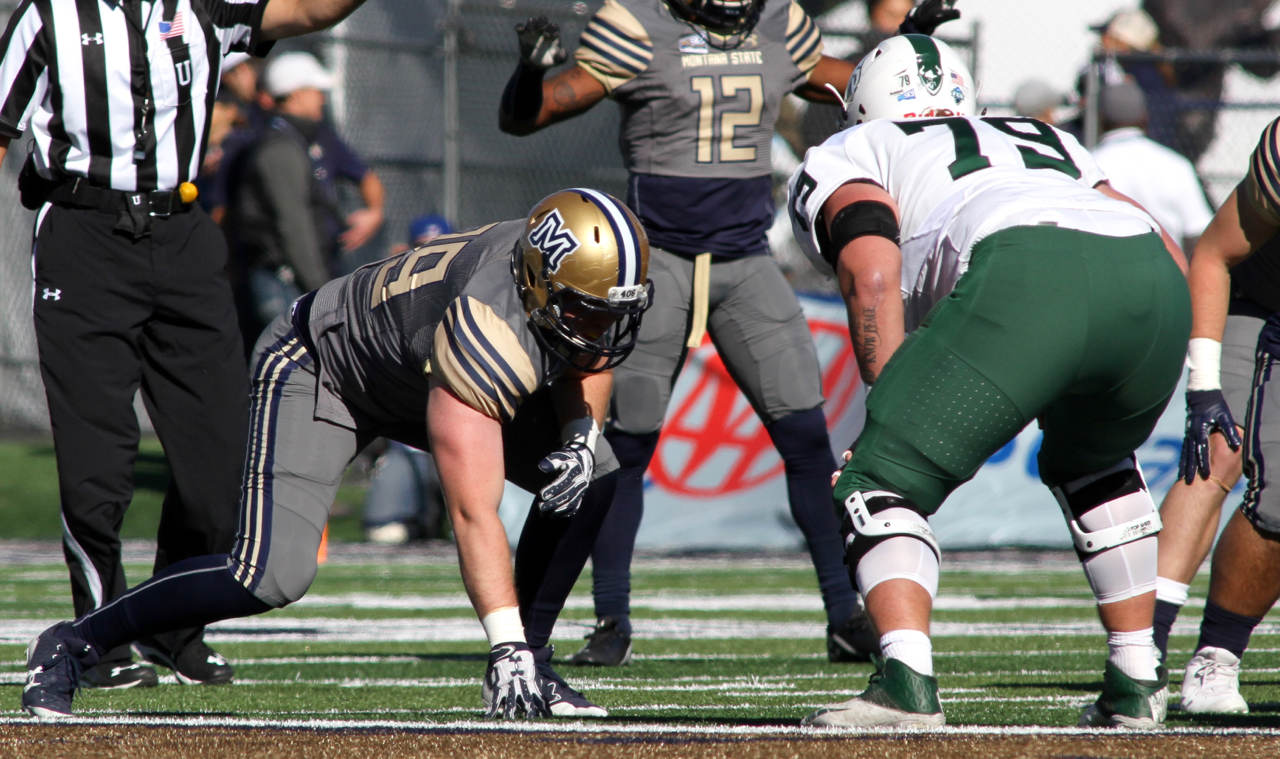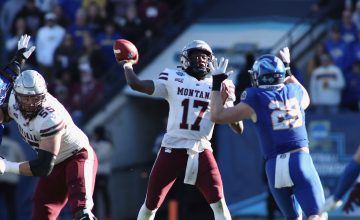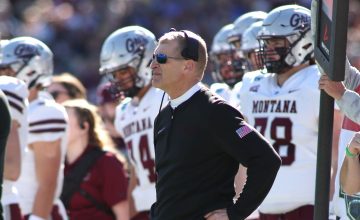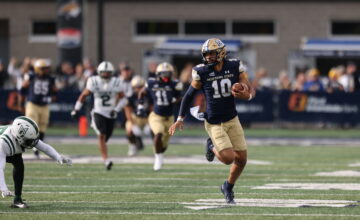BOZEMAN, Montana — A mile high and a mile deep – it’s where Marcus Ferriter grew up in a town dripping with more pride for its favorite sons than maybe any town in American.
A mile high and a mile deep – it’s a symbolic and fitting way to describe one of those favorite sons and his career at Montana State.
Ferriter chose Montana State over Montana coming out of Butte Central High School despite his family ties to the Griz. Growing up in a blue-collar town that sits a mile above sea level — a place defined by its altitude and its attitude as much as the mile deep Berkley Pitt — helped shape Ferriter from an early age.
As a senior in high school, Ferriter earned Class A Defensive Player of the Year by leading Butte’s Catholic school to the state title game. He led the state in sacks while also standing out on the basketball court. Although his cousin, Mike Ferriter, was an All-Big Sky wide receiver for the Griz, Marcus instead chose to follow his older brother Sean, a standout thrower for the Montana State track and field team, to Bozeman.
By his redshirt freshman season, the athletic, powerful defensive end was a starter on a young and upcoming Bobcat defensive front. Ferriter felt a mile high, just like the iconic Mining City he grew up in.
For the next two years, Ferriter felt like he was buried a mile deep. Montana State head coach Jeff Choate, a defensive line guru who coached the position at Florida and Washington before landing at MSU, put a high priority on stockpiling talent on the defensive front. Ferriter found himself struggling to find a defined role or elevated repetitions during games in a group filled with talented transfers and holdovers.. Ferriter never fell out of favor or lost faith.

“It’s been weird for me,” Ferriter said. “Freshman year, a lot of injuries went down and I’m playing even as an undersized dude (220 pounds).
What has kept me through is what Choate and (MSU defensive line coach Byron) Hout always say: Just stick through, good things will happen in the long run.”
Ferriter would not have earned the ultimate compliment from Choate as “Butte tough” if he would have walked away. And he would not have been able to live with himself if he quit.
So today, as the No. 6 Bobcats embark on a trip to San Luis Obispo, California to take on Cal Poly, no longer is Marcus Ferriter a mile high or a mile deep. The fifth-year defensive lineman is simply content.
“Now my senior year, I’m excited no matter what. If I get plays on the field, I’m excited,” Ferriter said. “If I’m with my teammates, I’m excited. I’m just proud to make it to this point.”
Being from Butte is like being from a different country in some ways. The Richest Hill on Earth has produced a variety of sayings and slang, characters and identities that remain unique even if the former boomtown’s heyday is decades in the past.
Butte was founded in 1864 as a mining camp in the Northern Rocky Mountains along the Continental Divide. When miners found copper, Silverbow County exploded, attracting pioneers, settlers, immigrants and the like from around the country and around the world.
Significant numbers of Asian, Eastern European and Irish immigrants descended up a town that turned into a booming city. At one point at the turn of the 20th century, Butte had more than 100,000 residents, making it one of the most populous Western city in the United States.
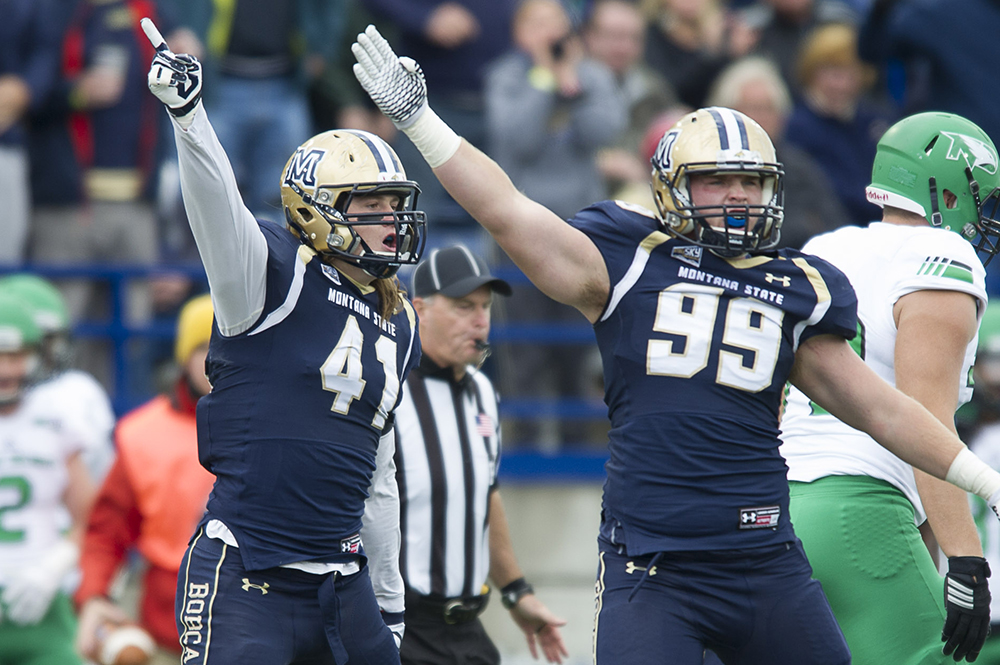
The Mining City became the site of various historical event centered upon the mining industry, including the infamous labor riot of 1914. The city also has some dark history, including the 1917 Speculator Mine disaster, the largest hard rock mining disaster in world history. And of course, the controversy of the Berkley Pit, one of the world’s largest and most unsightly open pit mines.
Because of the melting pot of cultures — at one point, the city had a significant Chinese population and still is home to more residents of Irish descent per capita, like Ferriter, than any city in America — Butte has developed and maintained an identity that centers upon a tireless work ethic, strong values of family and community and, of course, toughness. So strong is that identity that many still refer to the town simply as “Butte, America.”
The story of Montana State football has many influencers that have come from the Mining City. Jim Sweeney led the Bobcats into the Big Sky Conference era in the 1960s. Sonny Holland, a standout player on Montana State’s 1956 NAIA national title team, then coached Montana State from 1971 to 1977, leading MSU to the 1976 Division II national title and six wins in seven tries against the hated Montana Grizzlies.
Sonny Lubick, who rose to great fame as the defensive coordinator at the University of Miami during two national title runs before becoming the head coach at Colorado State, followed Holland as the Bobcat head coach. All three hail from Butte.
“Butte, it’s a fiber, a work ethic, a intrinsic fiber of the people that you aren’t going to put them down and keep them down forever because they will surprise you,” he said. “We always rise again. It’s a blue collar type of town. Butte has tried themselves in that. The game of football is something that Butte has hung its hat on.”
Butte has also gifted Montana State with standout players like Paul Dennehy, the quarterback of the 1976 national title team and three Ueland brothers.
During the modern era, Butte shifted to aligning with the Griz after the breakout career of Todd Erickson in the early 1990s, one of the first Griz to wearn Montana’s vaunted No. 37. Then Colt Anderson went from a walk-on to an All-American for the Griz between 2004 to 2008, setting the stage for a nine-year NFL veteran over the last decade.
Montana State’s roster featured offensive lineman Casey Dennehy earlier this decade. Nick Haynes and Jake Dallaserra are among the Butte players to letter for the Griz in recent years. But it’s been several years since a Butte Central alum made it to his fifth and final year with either program.
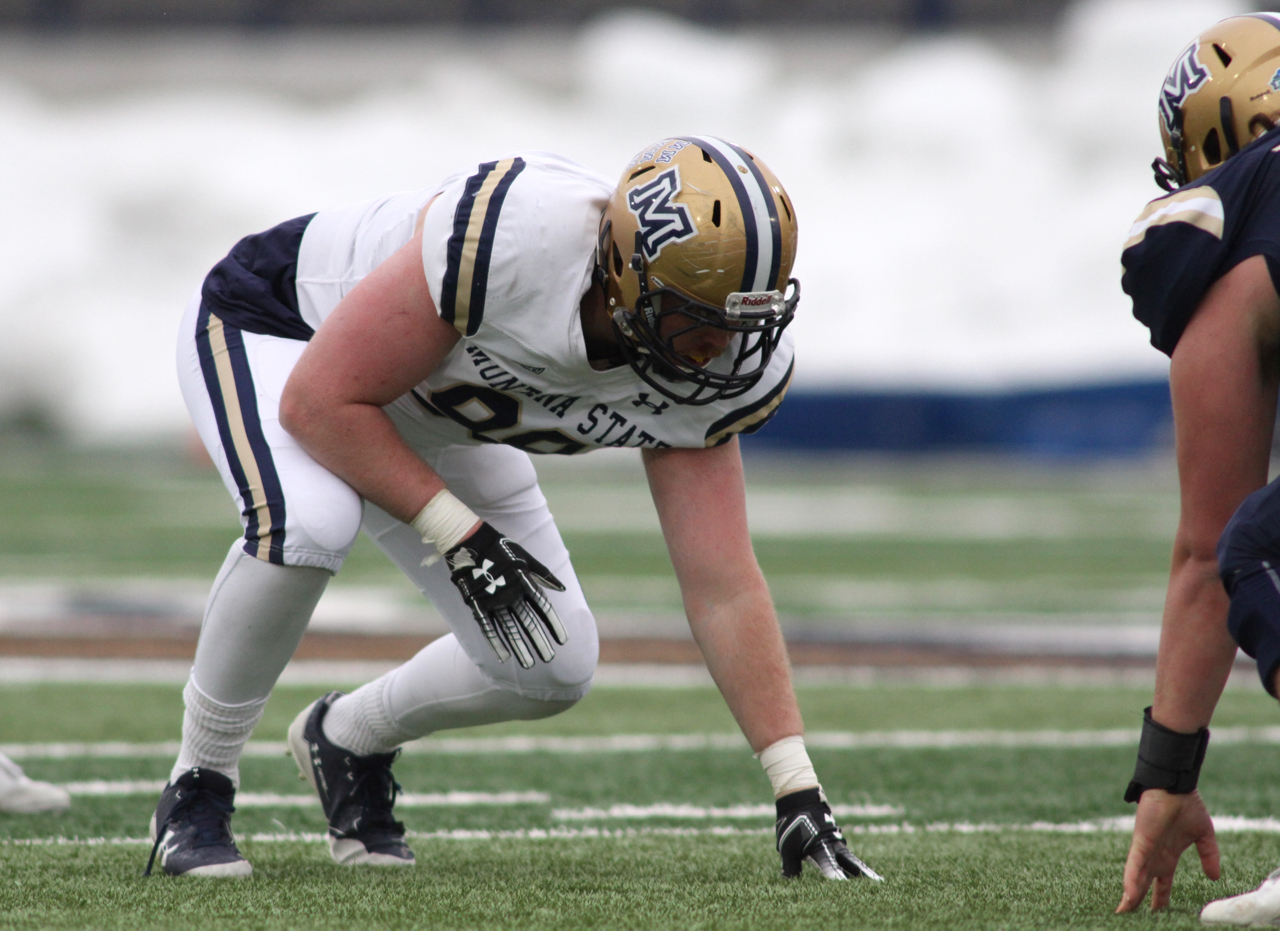
Ferriter has held a steady goal to not stop playing football until he has no eligibility remaining.
“He’s Butte Tough,” Choate said. “He’s a Central Catholic boy, so he’s got that edge to him, too. He’s very proud of where he comes from, like most Butte people are. We do have an unbelievable following there in Butte now.
“Butte is an interesting place. It’s a very loyal sports town. It’s completely unique. There’s that divide between the Bobcats and the Grizzlies that exist in that community, having a guy like Satch (Ferriter) that can bring that in and help people understand how important it is is crucial.”
Dan and LeAnn Ferriter moved to Butte from Gillette, Wyoming in 1996 when Dan took a job at Arco as an environmental engineer. Dan grew up in Butte and the Ferriter name is a recognizable one in Montana. Dan’s father, Dan Sr., was a standout handball player who won many championships over the years. And Mike, Marcus’ cousin and now the offensive coordinator at Idaho State, was one of 11 Griz ever to surpass 2,000 yards receiving in his career during his time with the Griz from 2004 until 2008.
Marcus’s older brothers Steven and Sean were both standout athletes at Butte Central before Marcus reached high school. Sean went on to earn All-Big Sky honors in the hammer throw at Montana State.
Sports and a pride in place were part of Marcus’ life from early on. Those values have stuck with him. When the Bobcats have to introduce themselves to each other before each season, Ferriter always says he’s from Butte, America. Now that the rest of his teammates get the reference, it brings laughs from all around.
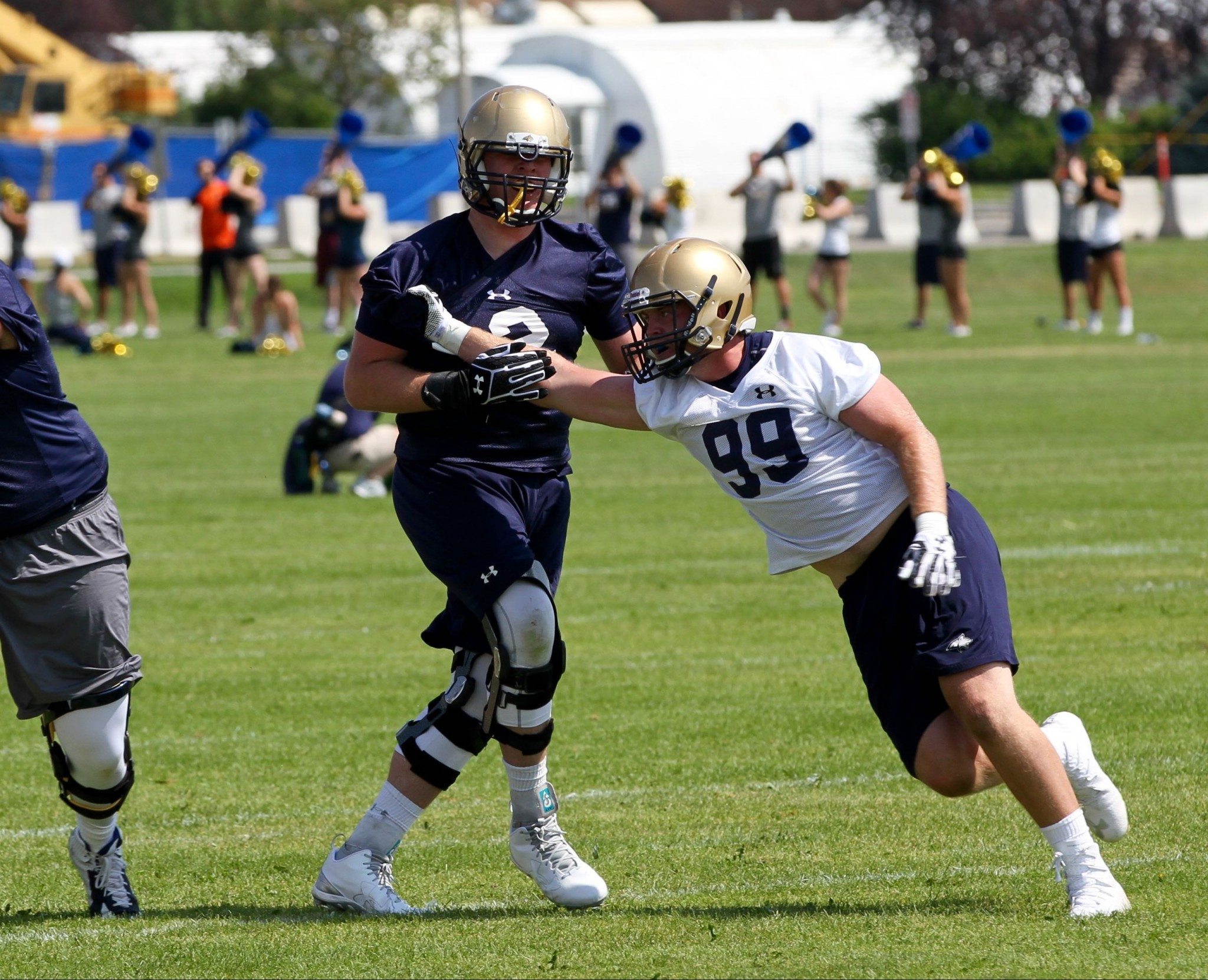
“Butte is like the Cleveland of Montana,” Ferriter said. “Pennsylvania has Pittsburgh. Montana has Butte. Hard work is how you survive. I didn’t have to do any of that, no mining or any of that but the culture in Butte is tough people survive.
“Growing up playing tough football at Butte Central, we have always prided ourselves on that. It got me here and I think it’s gotten me on the field.
“I definitely take pride in being from Butte. Choate definitely loves that too, the Butte pride I have and I’ve definitely worn that on my sleeve.”
During the 2016 season, Ferriter piled up 19 tackles, four tackles for loss and a sack in his debut college football season. He started most every one of MSU’s 11 games. The following season, he played in 10 games but had a hard time finding consistent snaps on MSU’s suddenly formidable unit. He finished with 10 tackles and half a sack.
Last season, Ferriter played in nine games and made two tackles. But he never faltered in his commitment to his teammates, even when individual doubt crept in. And that dedication does not go unnoticed.
“These are the guys who make up the program,” MSU senior captain Kevin Kassis said. “They are the backbone of our team, the guys who stick it out for the greater good.
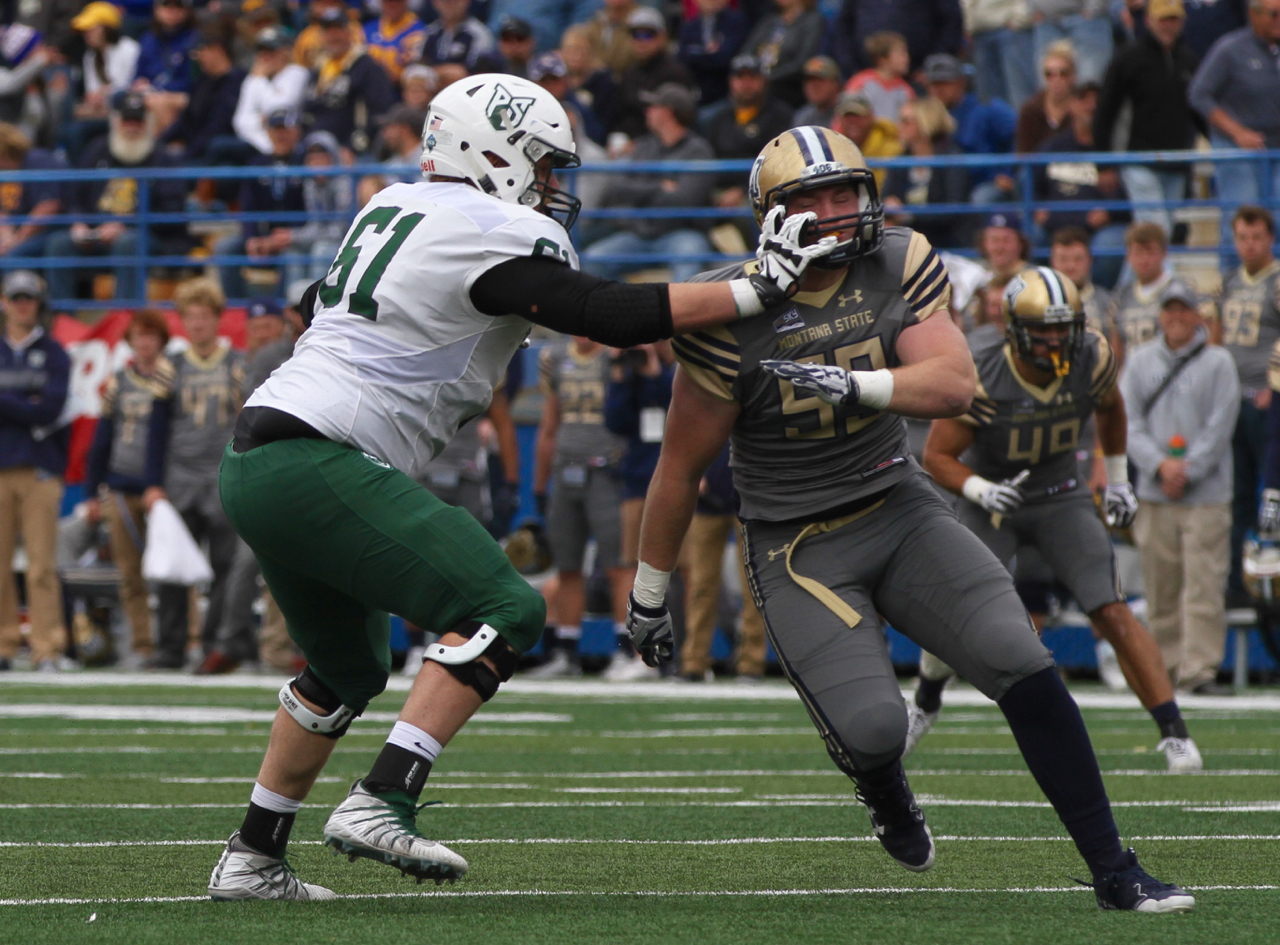
“And now look at him. He’s going to be a big contributor on that defensive line. It just shows – I don’t know if it’s millennial these days, but if you don’t get what you want right away, they look to abandoned or run or do something different, go to a different school, think the grass is greener. But look at Marcus – he stuck it out and now he’s a respected part of our team.”
Although Montana State’s roster features three former transfers from the University of Washington — seniors Bryce Sterk and Jason Scrempos along with junior Amandre Williams — along with four-year starter Derek Marks and prodigiously strong junior Chase Benson, Ferriter has found more playing time in his final year.
“I tell our guys, that’s the No. 1 quality that you have to have for success in Division 1 Football is perseverance…. I think Marcus is another great example of a guy that kept getting better and better, appreciated and enjoyed the things that this program gave him, beyond the opportunity to run out of the tunnel,” Choate said.
He has learned how to play each position on MSU’s defensive line. He is consistently getting more snaps behind Marks at MSU’s defensive tackle position. Hout praised him earlier this week as “a really good football player who knows how to use his hands and get off blocks.”
“My role has moved more toward the inside, which I like,” said Ferriter, who now weights 262 pounds. “College football is definitely a lot faster and my style on the interior, not having to worry about contain too much but more physical play suits me.”
“Football is just a lot faster. Offensive linemen even now, some of them are dudes who used to play tight end. The game is a lot faster and it’s a lot different. I might not be the typical size interior linemen but using your quickness can be to your advantage.”
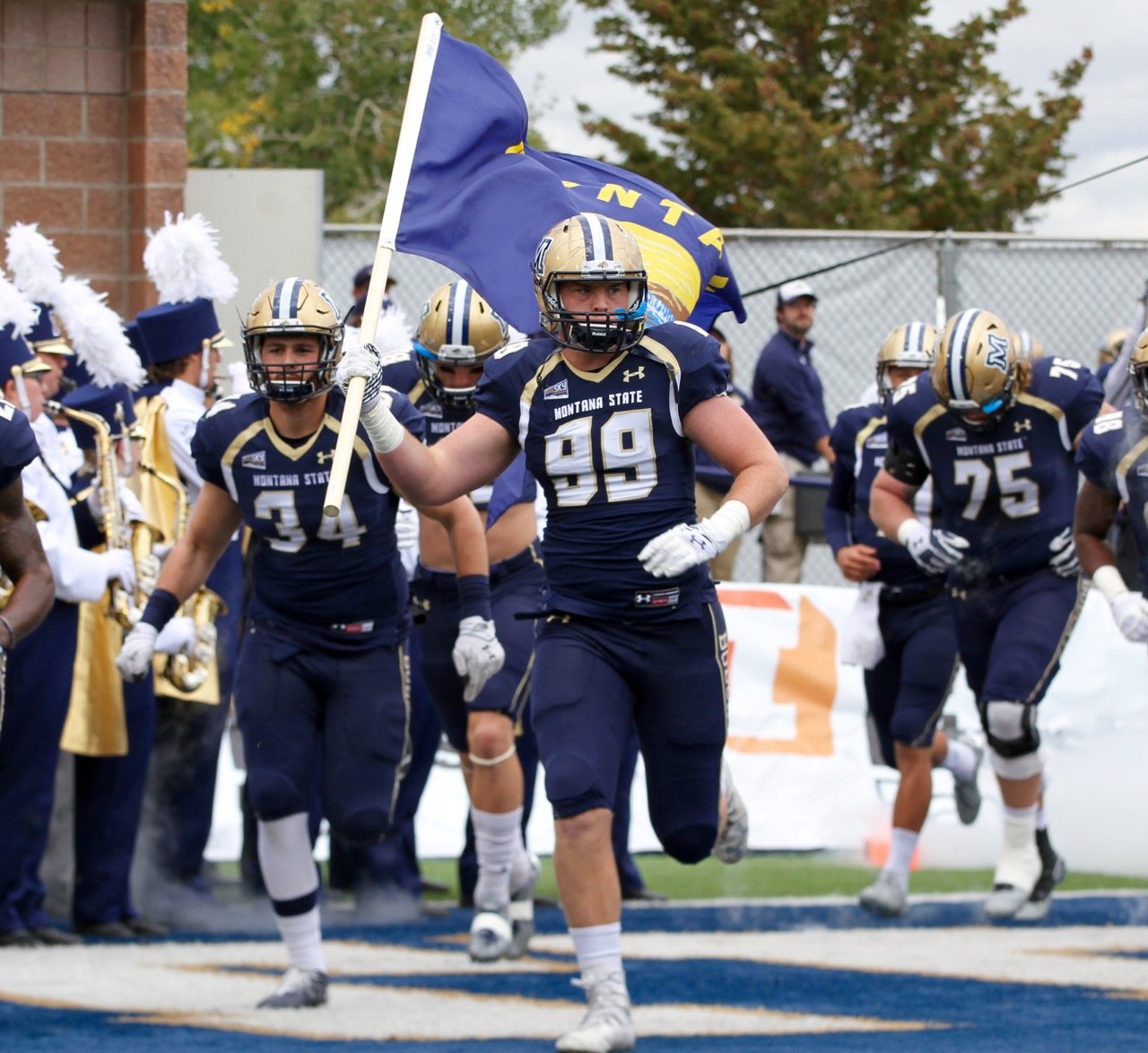
So far this fall, the 6-foot-4, now 262-pounder has played in all five games, notching seven tackles and a sack as MSU is off to its best start since 2012.
“The kid is amazing,” Hout said. “He comes from a great family. His parents are amazing people. He is the guy in our room who is a glue guy. He’s amazing to be around. He’s articulate. He is going to be very successful in whatever he chooses to do in life.
“He can play multiple positions for us. I’m really glad that he was able to stick with us. He was thinking of moving on and not coming back but we had the discussion that kept him here. He came up and told me the other day that the best decision he ever made was coming back. I’m really happy for him to see him have some success.”
Through it all, the redhead his teammates call Satch — Steven nicknamed Marcus that as a small boy because of Marcus’ love of legendary trumpet player Louis Armstrong, who’s nickname was ‘Satch’ or ‘Satchmo’ — Ferriter has never lost sight of where he comes from. And even when the electrical engineering major was a mile high or a mile deep, Ferriter never lost sight of where he is going.
“Friendships are the biggest thing,” Ferriter said. “Wherever I go after this, making bonds will help me get through everything. Friendships are huge and setting goals are huge. All these core values Coach Choate talks about, having character, being accountable, bringing toughness, having pride in whatever you do, those are huge.
“I’ve definitely matured through this whole experience. Looking back as a freshman, I’ve matured through all of it. I just think it’s taught me a lot. I could’ve graduated last spring but the love of this game, the love of this culture, I know I’m going to miss this more than anything when I’m done with it. All the values it’s taught me, I’ve grown to love it.”
Photos by Brooks Nuanez or noted. All Rights Reserved.

